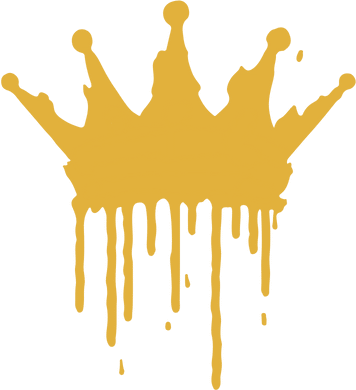Virtual Diamond Inventories, otherwise known as: “why is this diamond listed on your site, also listed on other sites?” Let’s go!
Let’s say I find a stone I love on RetailerXYZ, but when I check Stone Algo, I see that the same diamond is listed with five other retailers. Does that mean it’s a scam? Absolutely not!
How This Works #
If a stone is unsold, it remains available in the shared virtual inventory, meaning any retailer can list it and request it from the supplier once a customer places an order.
This process happens in two ways:
- Manually – When I’m sourcing a stone for your project, I contact the specific cutter and their team directly. I request videos, make custom inquiries, and have ongoing conversations to ensure the stone meets your needs.
- Automatically – When you buy a stone from a retailer, their system automatically marks it as ‘sold’ or ‘on hold’ until they can officially secure it. At that point, they reach out to whoever is physically holding the stone—this could be a warehouse, a factory, or even another jeweler.
Why does this matter for shipping times?
If a stone is located in New York City and shipping to Chicago, the turnaround is much faster than if it’s coming from India. That doesn’t mean the stone is coming from a shady source—it could just as easily be at an ultra-luxury jewelry boutique in Paris. But either way, the retailer needs time to contact the current holder and arrange for shipment.
This is why some retailers have longer shipping times than others—it depends on where the stone is physically located and how long it takes to coordinate the transfer.
Now – let’s break this down into what these inventories actually are, and how they are used.
There are two aspects at play here, and they tend to get mixed up.
1. Factory-Specific Vendors #
Some vendors work exclusively with a single factory for their stones. An example of this would be a large, mass-producing retailer like Tianyu. They, and others like them, process and cut their own rough material into stones, which they then sell. They may also sell on a virtual inventory on a wholesale level, but when you purchase from them as a retailer, you’re only going to have access to the stones that they are cutting. That isn’t a bad thing! These vendors often offer custom-cut stones at much lower prices because of the direct-to-consumer model they utilize.
That said, there are risks that come with buying from an overseas vendor, including time and language differences, the postal service, issues with sizing and quality and returns, etc. It’s not for everyone, but it is a good way to save some money if you’re willing to put in the work. Typically, you work directly with a sales representative, who manages the process for you (from sourcing to jewelry creation). You should do your research when working with one of these large vendors, as different sales representatives will give you different pricing based on their skill level, seniority, commission structure, and/or if you’ve purchased from them before.
2. Online Retailers Using Shared Virtual Inventory #
Then, the more common version as diamond purchasing (both natural and lab diamonds) has moved largely online, and customers are allowed to pick out their own stones, pull from the same wholesale virtual inventory. These companies make money by keeping overhead low: instead of stocking thousands of diamonds, they use a shared database where stones are listed but not yet purchased. That’s what we do! This allows us to access millions of diamonds worldwide, develop relationships with different cutters and manufacturers, and get the best possible pricing for you. We use different cutters for different things – from faceting patterns (no-bow-tie ovals, anyone?) to those specializing in cutting the most optimal and varied colored diamond options (Gabrielle definitely has her favorites).
Where do these diamonds physically exist?
Everywhere. The inventory is global and stored in various locations – factories, wholesalers, manufacturers, and even high-end jewelry stores. Retailers access these stones on demand, which is why some stones may have longer shipping times.
#
How to Leverage This as a Buyer #
The key takeaway: You can shop for the same diamonds across multiple sites. If you find a diamond you love but it’s a final sale, or you want a better return policy, you can search its certificate number across other retailers.
Example:
- You see a diamond on RetailerABC that has a policy you don’t like (final sale, one return per year, or similar) or you would prefer someone else craft a piece of jewelry with it (you want a specific stock setting that we have on Adamas that isn’t available elsewhere).
- You can then take the IGI (or GIA) certificate number and search for it elsewhere (e.g., on Adamas!).
- If the diamond is available (which, if you’re seeing it up for sale on both sites, it typically is), either directly purchase it from the site you would prefer to buy from, or you can reach out via email and request that they source the stone for you.
- If you’re reaching out to Adamas, we want your business, so we will do our best to procure the stone for you, even if it’s not readily available. Now you have the exact same stone, with different customer service or craftsmanship options. As the consumer, this gives you the power to decide how your money is spent. And THAT is what we want at Adamas.
This works because retailers don’t own these stones – they’re simply brokering the sale from the wholesaler or manufacturer.
#
Who Owns and Manages These Virtual Inventories? #
Every retailer selling loose diamonds is connected to one or more of the major virtual inventory platforms. These platforms act as aggregators for diamond cutters who want to sell at scale. Some of the biggest ones include:
- Polygon Jeweler’s Network
- Virtual Diamond Boutique (VDB) – this is what we use!
- RapNet
- Nivoda
- GemFind
Most of these platforms claim to be the “largest marketplace,” but in reality, they all overlap heavily and pull from the same global pool of diamonds.
As a retailer, you can:
✅ Choose which suppliers to work with (e.g., only US-based or India-based cutters, only carbon-neutral stones, only earth mined diamonds from Canada, etc.).
✅ Filter stones by quality (e.g., only showing VS2+ clarity, K color or better).
✅ Decide whether to hide certificate numbers (so customers can’t shop around—unfortunately, this is common. We do NOT do this! Transparency is key!).
Bottom line: As a consumer, you have power. Search for the best price, the best policies, the best craftsmanship, and the best customer service. It is our goal that you find all of those things with us at Adamas, but if not, we hope that you find exactly what you’re looking for elsewhere! The diamond industry has been shrouded in mystery for too long, and we just want you to feel good about the purchases that you are making.
#
Retailer Pricing Strategies and the Myth of “Exclusive Stones” #
No retailer has a monopoly on lab-grown diamonds unless they work exclusively with a factory or cutter. Otherwise, you are seeing the same diamonds across multiple sites—just with different markups.
Just like every other industry, retailers can customize pricing in real time. They might:
- Mark up certain carat sizes or shapes higher than others.
- Raise prices pre-Black Friday so they can offer “steep discounts” that aren’t actually deals.
- Run constant sales – consumers may not be calculating the discount in their minds, so when they’re comparing prices, the stone is already in their cart.
- Only show inventory from the cheapest supplier to maximize their margins.
If a diamond is sold, another nearly identical one will appear soon. Don’t fall for FOMO. And if you really feel like you NEED a certain stone that slipped out of your grasp – reach out to us. We can contact one of our partners and have it custom cut for you.
#
Current Pricing Trends #
💎 Lab diamonds are at historic wholesale lows—$50-100 per carat.
💎 Fancy colored lab diamonds cost about double, and fancy shapes (especially rarer shapes like an antique cut or a multi-sided cut) cost about three to four times as much.
💎 Gold is currently more expensive than platinum and much more expensive than lab diamonds themselves (which affects ring pricing, because many retailers do not want their customers to know that their lab diamond costs far less than the setting they put the stone in).
#
Final Thoughts #
Consumers today have unprecedented access to high-quality diamonds at rock-bottom prices. But you do need to be an informed buyer.
✅ Always check the certificate number across multiple sites.
✅ Ask for price matches.
✅ Don’t panic if you miss a stone – another just like it will appear (or we will make it for you!)
Lab diamonds are not rare, and no retailer has an exclusive grip on them. Use that to your advantage!


